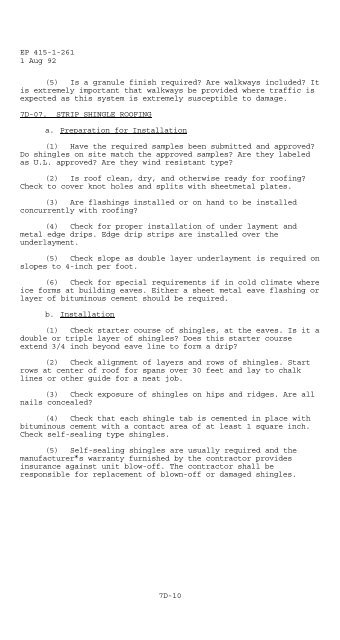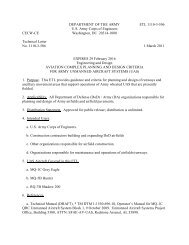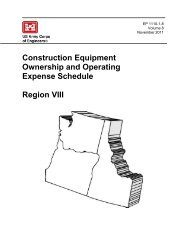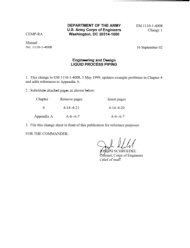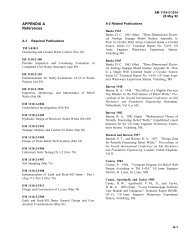Chapter 7D - Publications, US Army Corps of Engineers
Chapter 7D - Publications, US Army Corps of Engineers
Chapter 7D - Publications, US Army Corps of Engineers
Create successful ePaper yourself
Turn your PDF publications into a flip-book with our unique Google optimized e-Paper software.
EP 415-1-261<br />
1 Aug 92<br />
(5) Is a granule finish required? Are walkways included? It<br />
is extremely important that walkways be provided where traffic is<br />
expected as this system is extremely susceptible to damage.<br />
<strong>7D</strong>-07. STRIP SHINGLE ROOFING<br />
a. Preparation for Installation<br />
(1) Have the required samples been submitted and approved?<br />
Do shingles on site match the approved samples? Are they labeled<br />
as U.L. approved? Are they wind resistant type?<br />
(2) Is ro<strong>of</strong> clean, dry, and otherwise ready for ro<strong>of</strong>ing?<br />
Check to cover knot holes and splits with sheetmetal plates.<br />
(3) Are flashings installed or on hand to be installed<br />
concurrently with ro<strong>of</strong>ing?<br />
(4) Check for proper installation <strong>of</strong> under layment and<br />
metal edge drips. Edge drip strips are installed over the<br />
underlayment.<br />
(5) Check slope as double layer underlayment is required on<br />
slopes to 4-inch per foot.<br />
(6) Check for special requirements if in cold climate where<br />
ice forms at building eaves. Either a sheet metal eave flashing or<br />
layer <strong>of</strong> bituminous cement should be required.<br />
b. Installation<br />
(1) Check starter course <strong>of</strong> shingles, at the eaves. Is it a<br />
double or triple layer <strong>of</strong> shingles? Does this starter course<br />
extend 3/4 inch beyond eave line to form a drip?<br />
(2) Check alignment <strong>of</strong> layers and rows <strong>of</strong> shingles. Start<br />
rows at center <strong>of</strong> ro<strong>of</strong> for spans over 30 feet and lay to chalk<br />
lines or other guide for a neat job.<br />
(3) Check exposure <strong>of</strong> shingles on hips and ridges. Are all<br />
nails concealed?<br />
(4) Check that each shingle tab is cemented in place with<br />
bituminous cement with a contact area <strong>of</strong> at least 1 square inch.<br />
Check self-sealing type shingles.<br />
(5) Self-sealing shingles are usually required and the<br />
manufacturer*s warranty furnished by the contractor provides<br />
insurance against unit blow-<strong>of</strong>f. The contractor shall be<br />
responsible for replacement <strong>of</strong> blown-<strong>of</strong>f or damaged shingles.<br />
<strong>7D</strong>-10


